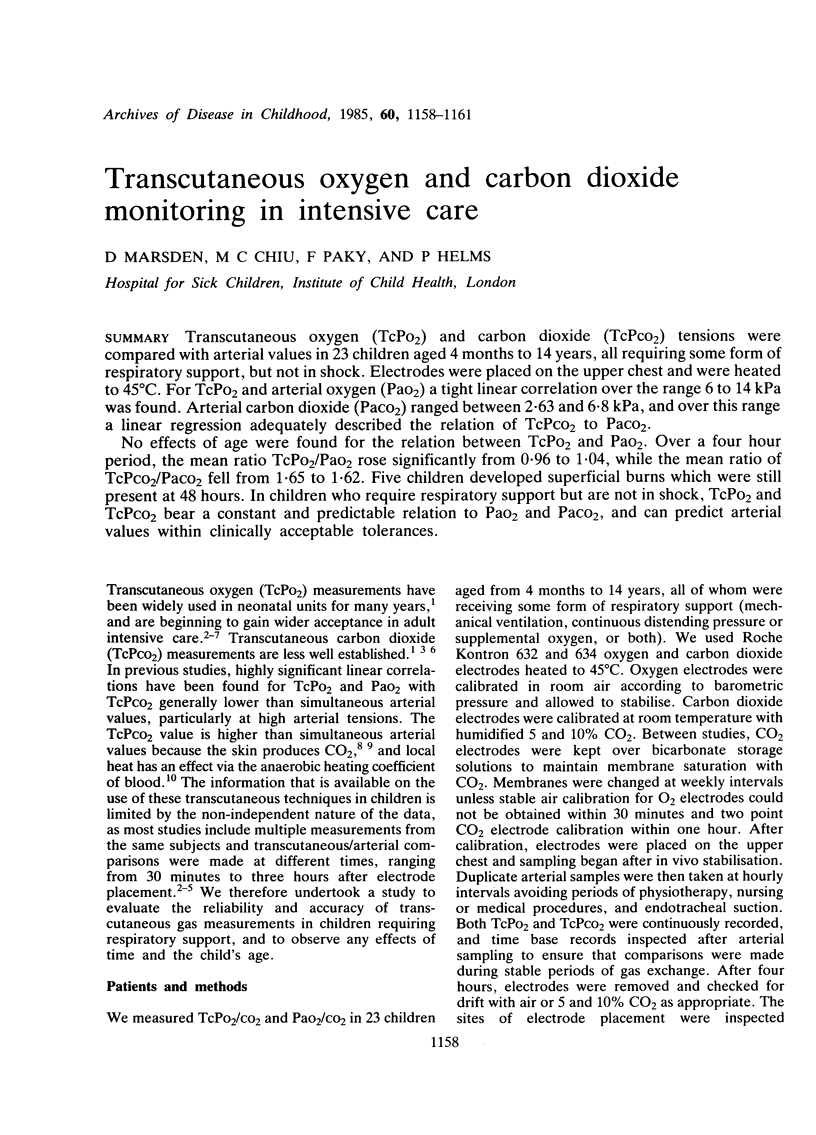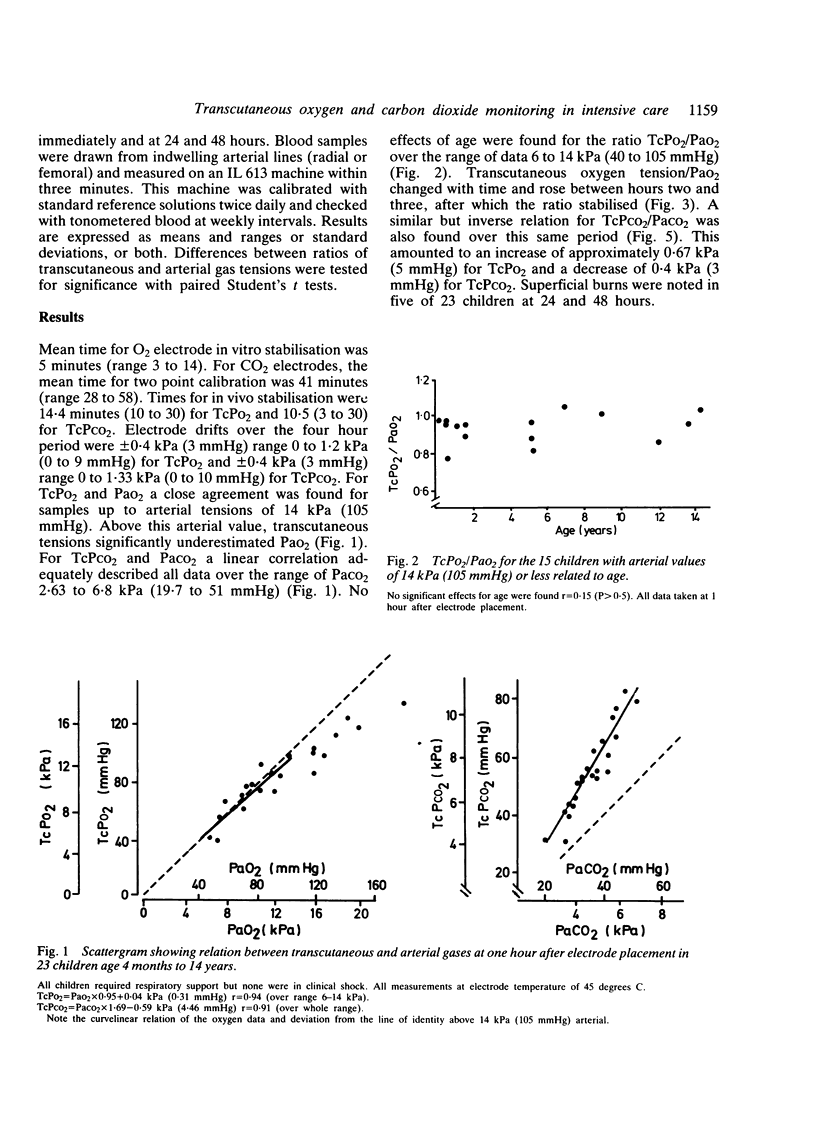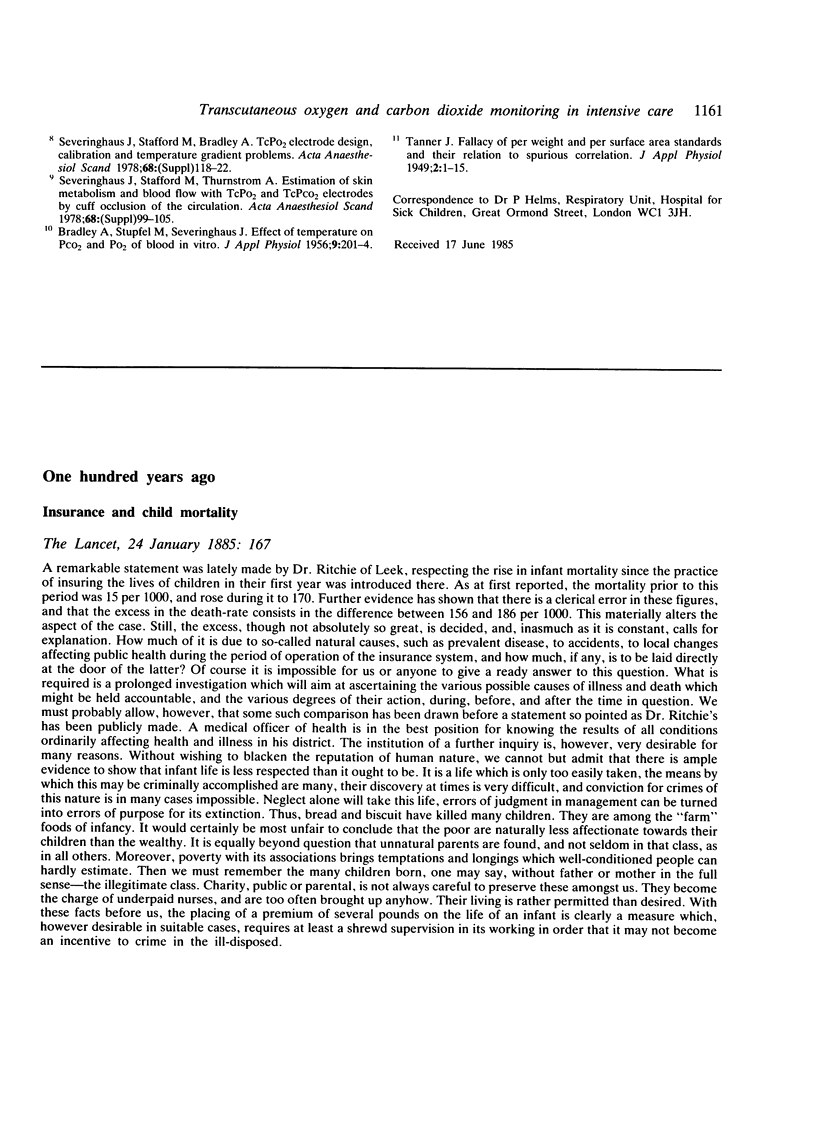Abstract
Transcutaneous oxygen (TcPo2) and carbon dioxide (TcPco2) tensions were compared with arterial values in 23 children aged 4 months to 14 years, all requiring some form of respiratory support, but not in shock. Electrodes were placed on the upper chest and were heated to 45 degrees C. For TcPo2 and arterial oxygen (Pao2) a tight linear correlation over the range 6 to 14 kPa was found. Arterial carbon dioxide (Paco2) ranged between 2.63 and 6.8 kPa, and over this range a linear regression adequately described the relation of TcPco2 to Paco2. No effects of age were found for the relation between TcPo2 and Pao2. Over a four hour period, the mean ratio TcPo2/Pao2 rose significantly from 0.96 to 1.04, while the mean ratio of TcPco2/Paco2 fell from 1.65 to 1.62. Five children developed superficial burns which were still present at 48 hours. In children who require respiratory support but are not in shock, TcPo2 and TcPco2 bear a constant and predictable relation to Pao2 and Paco2, and can predict arterial values within clinically acceptable tolerances.
Full text
PDF



Selected References
These references are in PubMed. This may not be the complete list of references from this article.
- BRADLEY A. F., SEVERINGHAUS J. W., STUPFEL M. Effect of temperature on PCO2 and PO2 of blood in vitro. J Appl Physiol. 1956 Sep;9(2):201–204. doi: 10.1152/jappl.1956.9.2.201. [DOI] [PubMed] [Google Scholar]
- Cassady G. Transcutaneous monitoring in the newborn infant. J Pediatr. 1983 Dec;103(6):837–848. doi: 10.1016/s0022-3476(83)80698-2. [DOI] [PubMed] [Google Scholar]
- Huch R., Huch A., Albani M., Gabriel M., Schulte F. J., Wolf H., Rupprath G., Emmrich P., Stechele U., Duc G. Transcutaneous PO2 monitoring in routine management of infants and children with cardiorespiratory problems. Pediatrics. 1976 May;57(5):681–690. [PubMed] [Google Scholar]
- Löfgren O. Transcutaneous oxygen measurement in adult intensive care. Acta Anaesthesiol Scand. 1979 Dec;23(6):534–544. doi: 10.1111/j.1399-6576.1979.tb01484.x. [DOI] [PubMed] [Google Scholar]
- Monaco F., Nickerson B. G., McQuitty J. C. Continuous transcutaneous oxygen and carbon dioxide monitoring in the pediatric ICU. Crit Care Med. 1982 Nov;10(11):765–766. doi: 10.1097/00003246-198211000-00014. [DOI] [PubMed] [Google Scholar]
- Severinghaus J. W., Stafford M., Bradley A. F. tcPCO2 electrode design, calibration and temperature gradient problems. Acta Anaesthesiol Scand Suppl. 1978;68:118–122. [PubMed] [Google Scholar]
- Tremper K. K., Shoemaker W. C., Shippy C. R., Nolan L. S. Transcutaneous PCO2 monitoring on adult patients in the ICU and the operating room. Crit Care Med. 1981 Oct;9(10):752–755. doi: 10.1097/00003246-198110000-00017. [DOI] [PubMed] [Google Scholar]
- Yahav J., Mindorff C., Levison H. The validity of the transcutaneous oxygen tension method in children with cardiorespiratory problems. Am Rev Respir Dis. 1981 Nov;124(5):586–587. doi: 10.1164/arrd.1981.124.5.586. [DOI] [PubMed] [Google Scholar]
- Yip W. C., Tay J. S., Wong H. B., Ho T. F. Reliability of transcutaneous oxygen monitoring of critically ill children in a general pediatric unit. Clin Pediatr (Phila) 1983 Jun;22(6):431–435. doi: 10.1177/000992288302200607. [DOI] [PubMed] [Google Scholar]


